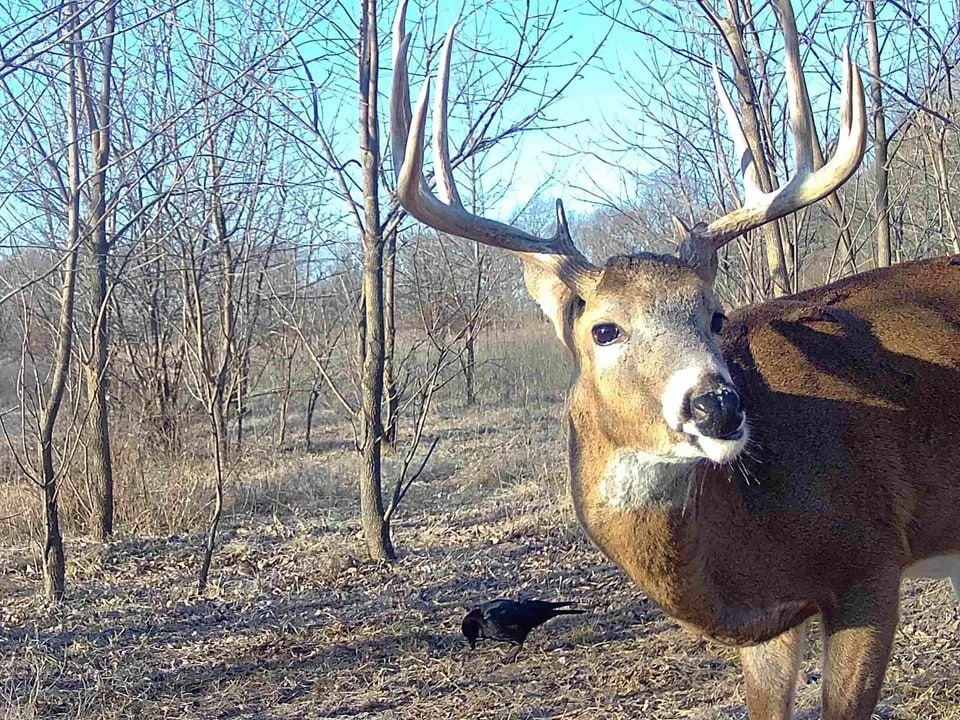CRP hunting happens on land enrolled in the Conservation Reserve Program, a federal initiative that pays farmers to convert cropland back to native grasses and natural habitat. These restored areas create perfect wildlife sanctuaries where tall grasses and diverse plants provide cover for deer to bed down and birds to nest safely from predators. Hunters who discover these spots often find themselves surrounded by more wildlife than most other habitats can support.
The combination of minimal human disturbance and abundant cover makes CRP land extremely attractive to mature bucks, pheasants, quail, and other game species that hunters prize. Red Cedar Land offers properties with CRP enrollment for hunters seeking prime hunting ground that also comes with the financial perks of program payments.
Benefits of CRP Land for Hunting
- Thick vegetation provides ideal bedding areas where mature bucks can hide during daylight hours
- Native grasses support high numbers of upland birds like pheasant and quail
- Less human disturbance compared to actively farmed land
- Natural food sources attract many wildlife species
- Hunting pressure tends to be lower on CRP land than in public hunting areas
- Year-round habitat supports healthier game populations
- Land value often increases due to environmental improvements
- CRP land often makes for excellent hunting land for sale due to its established wildlife populations
Scouting CRP Fields the Right Way
Most hunters make the mistake of walking straight through CRP fields, pushing all the game out before they ever get a chance to hunt. The smarter approach starts with using good optics from a distance, watching animal movement patterns without disturbing them. Focus your attention on field edges where you can spot trails, beds, droppings, rubs, and other signs without alerting wildlife to your presence.
The most productive scouting happens early morning and late evening when deer move between bedding and feeding areas. Look for structures within the CRP land that create natural funnels like old fence lines, slight dips in terrain, lone trees, or patches of different vegetation. Game animals naturally travel along these transition areas, making them hotspots for later hunting setups.
Whitetail Deer Hunting on CRP Land
Mature bucks love CRP fields because the tall grasses provide security during daylight hours while still allowing them to detect danger through scent. Most successful deer hunting on these properties happens when hunters position themselves between bedding areas in the CRP fields and food sources like nearby agricultural fields. The key lies in understanding wind patterns and setting up where deer feel safe moving through the habitat.
- Hunt the transition zones where CRP land meets timber, creeks, or crop fields
- Avoid walking through bedding areas – access your hunting spot from the downwind side
- Focus on morning hunts when deer return to bed after feeding overnight
- Look for subtle terrain features that create natural deer funnels
- Pay attention to tracks showing deer entry and exit points at field edges
- Stay extra quiet and scent-free since animals bed closer than you might think
CRP Upland Hunting: Birds, Dogs, and Gear
Pheasants and quail thrive in the thick grass cover of CRP fields, especially where these areas border grain fields that provide food sources. The dense vegetation offers protection from both predators and harsh weather conditions, making these spots prime hunting locations.
- A good hunting dog becomes almost necessary in mature CRP fields where birds hold tight
- Work fields with multiple hunters spaced 20-30 yards apart to create an effective pushing line
- Morning hunts catch birds leaving roosting cover, while late afternoon hunts find birds returning to heavy cover
Proper gear makes a big difference when tackling the challenging terrain of CRP fields:
- Brush pants and heavy shirts prevent sharp grass from cutting skin
- Boots with good ankle support help navigate uneven ground hidden beneath grass
- Bring plenty of water for both yourself and your hunting dogs
- Wear bright orange for safety, as visibility in tall grass is limited
- Use lighter-gauge shotguns if walking all day to reduce fatigue
Timing and Weather Tips for CRP Hunting
Hunting success in CRP fields changes throughout the season. Early on, wildlife remains scattered across the landscape, but as crops get harvested, animals concentrate more in the permanent cover. After the first frost, grasses begin to lie down, creating paths that wildlife follow consistently. Snow reveals exact travel patterns while cold temperatures push birds deeper into cover, making them easier to locate for the patient hunter.
Land Access and Property Rules
Access to CRP lands comes through public programs or private arrangements. Many states offer walk-in access on private CRP-enrolled properties, compensating landowners for public hunting. For private access, Red Cedar Land offers land for sale with CRP enrollment that provides both quality habitat and program payments. These contracts include management requirements that may limit food plot development or equipment use during certain periods, so understanding these rules before purchasing or leasing prevents future problems while maintaining the habitat quality that attracts wildlife.
Smart Strategies for CRP Hunting Success
- Hunt the edges first before pushing into the middle of large fields.
- Bring plenty of water for both yourself and hunting dogs in warm weather.
- Use natural vegetation as concealment rather than bringing bulky blinds.
- Focus hunting efforts on days with light winds when animals move more freely.
- Learn to read subtle terrain features that influence wildlife movement.
- When evaluating recreational land for sale, pay special attention to CRP fields with diverse terrain features.
- Give heavily hunted areas several days to recover before returning.
- Plan access routes that avoid known bedding areas.
- Pay attention to how neighboring properties affect wildlife patterns on CRP land.
